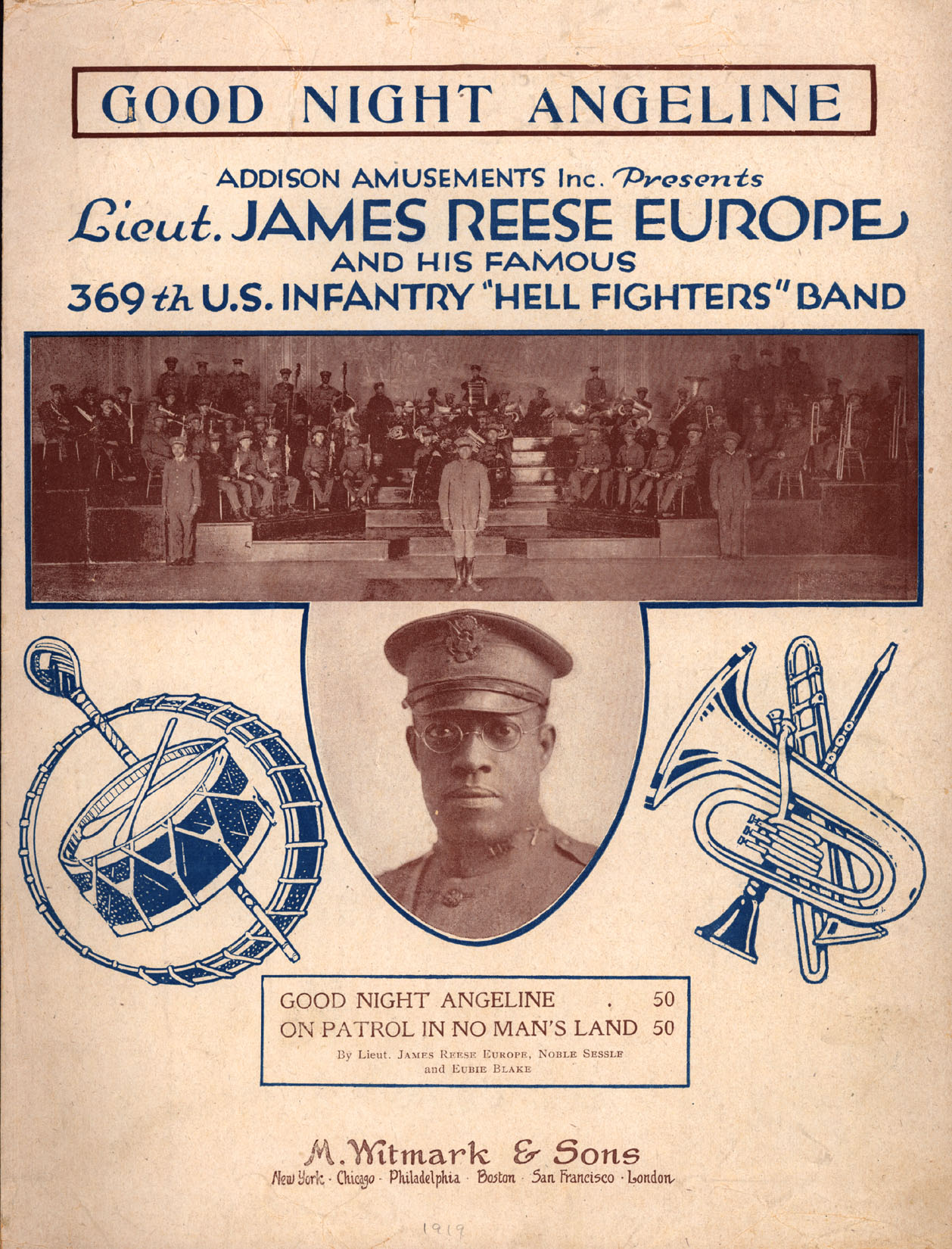
Syncopated Brass Bands 3
Some two years later, Europe was making plans to tour England and France, but with the declaration of war, his plans changed:
On September 18, 1916, Europe enlisted in the 15th New York Infantry and was soon invited to organize a brass band as part of the 15th Infantry Regiment. In 1917 they were sent to France where they not only entertained numerous soldiers, officers, and French civilians but also earned the nickname "Hellfighters" after proving themselves in battle. After the Armistice Europe and his men eventually returned to the United States and an eager public. They quickly returned to the recording studio and in March 1919 recorded a session for the Pathé company that solidified Europe's position as transitional figure between syncopated ragtime dance music and jazz.
(Lornell 2016, 96)
In recalling an experience that took place in 1918 when his band played in the Théâtre des Champs Elysée's, Europe states:

Before we had played two numbers the audience went wild. We had conquered Paris. General Bliss and French high officers who had heard us insisted that we should stay in Paris, and there we stayed for eight weeks. Everywhere we gave a concert it was a riot, but the supreme moment came in the Tuileries Gardens when we gave a concert in conjunction with the greatest bands in the world-the British Grenadiers' Band, the band of the Garde Républicain [sic], and the Royal Italian Band. My band, of course, could not compare with any of these, yet the crowd, and it was such a crowd as I never saw anywhere else in the world, deserted them for us. We played to 50,000 people at least, and, had we wished it, we might be playing yet.
Southern 1997, 354







